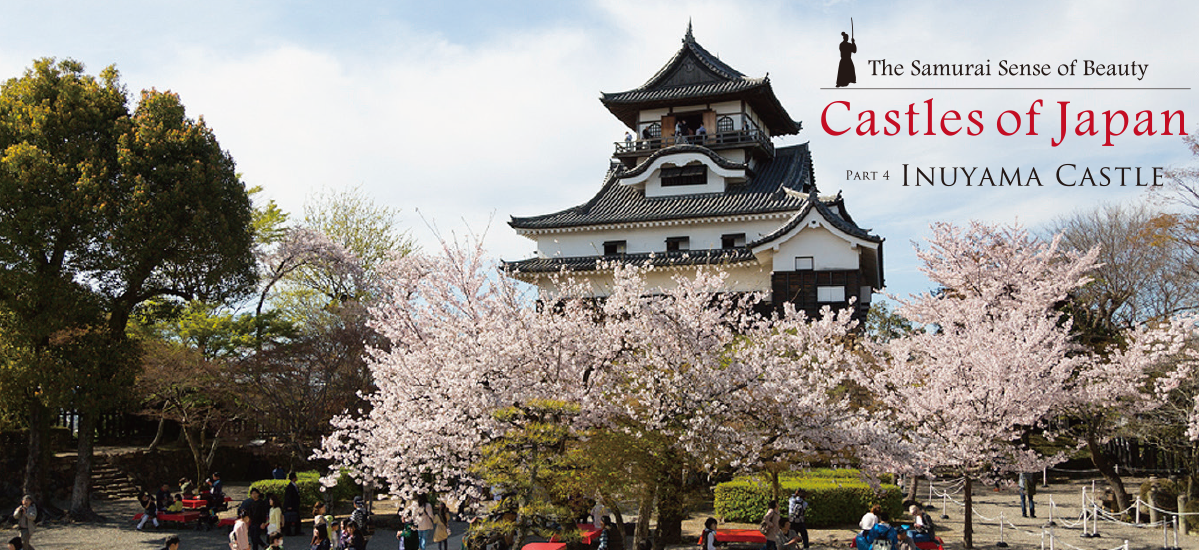
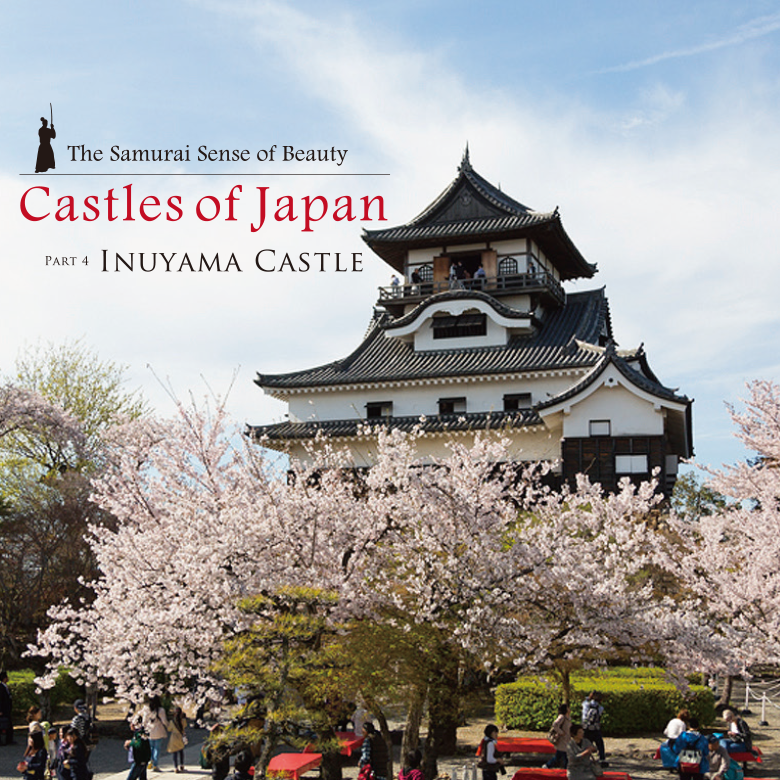
There was a time when tens of thousands of castles stood proudly in Japan. Most of those historical edifices have long since been destroyed, and many that now remain are reconstructions or replicas of what used to be. In the entire country, only twelve castles remain as they were when they were built. The sight of these beautiful original castles strikes a chord in the hearts of all who see them. This time we visit national treasure Inuyama Castle, in Aichi Prefecture. (Photos courtesy of the Inuyama City Tourism Association.)
Text : 中澤浩明 Hiroaki Nakazawa / English Version : Judy Evans
Keyword : Japanese Castles / Castles of Japan Series / Aichi Prefecture / Inuyama Castle / Inuyama City / Borogata
A Picturesque Fortress in a Strategic Location
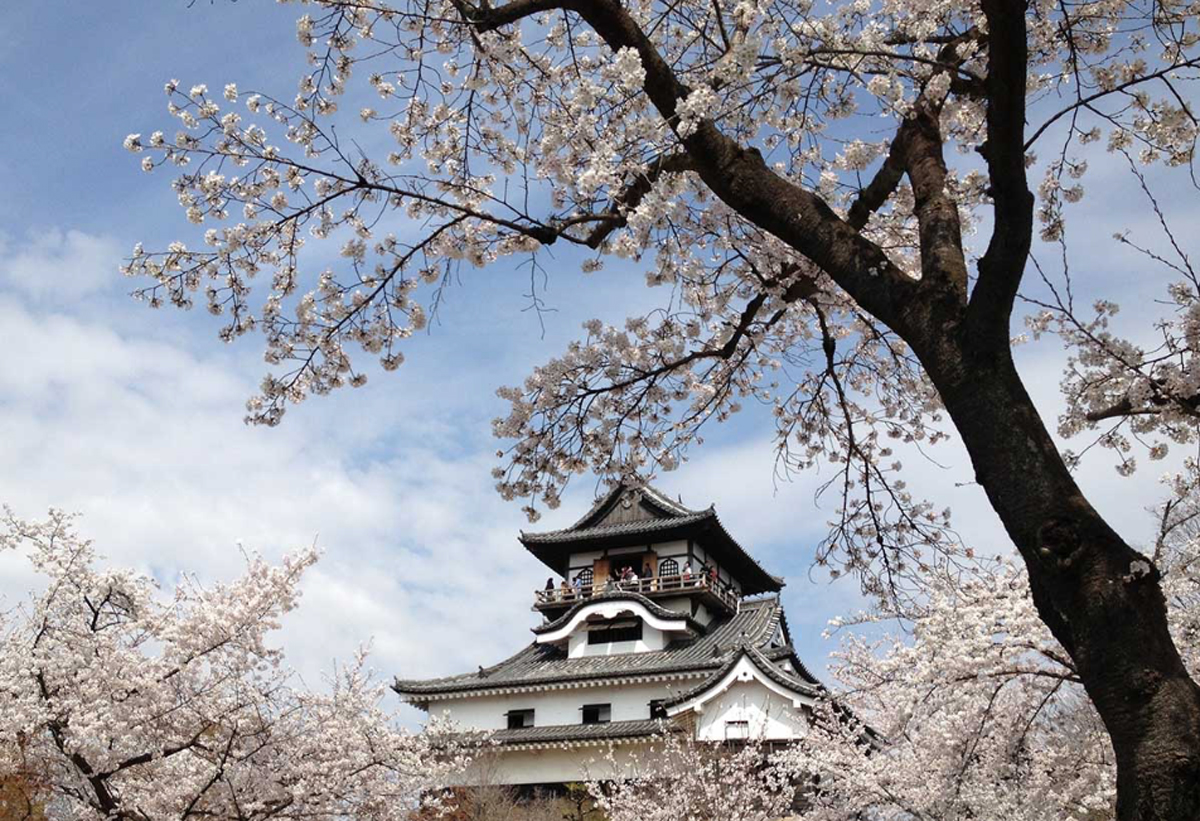
The picturesque qualities of Inuyama Castle and its location on a hill looking down on the Kiso River have been compared to 6th century Chinese poet Li Bai’s description of the ancient Baidi-cheng Fortress, which stands at the edge of the Yangtze River. This literary likeness has earned Inuyama Castle the nickname Hakutei-jō, the Japanese pronunciation of Baidi-cheng.
Inuyama Castle was built within easy access to the Kiso Kaidō (also known as the Nakasendō), the old inland route connecting Kyōto to Edo (Tōkyō). The Kiso section of the route follows the Kiso River, a major trade and transportation artery, making the location of Inuyama Castle a strategic point both politically and financially. The use of this site as a fortress predates the construction of the main castle tower, which is thought to have been built in 1537 by Oda Nobuyasu (uncle of Oda Nobunaga) from material brought from the former Kinoshita Castle in Inuyama, now a historic site.
Known as an ushiro-genko style fortress, Inuyama Castle backs onto the Kiso River and is protected by the river itself, as well as by the steep cliffs that jut out into the river along this section of the bank. With the river to the north, the castle faces south. The concentric enclosures that once stepped down the hillside in front of the castle were known as the Hon-maru (Main Enclosure) at the top of the hill, then the Sugi-no-maru (Cedar Tree Enclosure), Momi-no-maru (Fir Tree Enclosure)and Kiri-no-maru (Paulownia Tree Enclosure), with the Matsu-no-maru (Pine Tree Enclosure) at the bottom. All that remains now is the main castle tower in the Hon-maru, as well as the stone walls and dry moat of the Hon-maru, which survive in their original form.

A Quaint Bōrōgata Style Castle Tower
The castle tower is built in the quaint bōrōgata (watch-tower type) style, an older style of castle architecture compared to that of most surviving castle towers. The bōrōgata style gives the impression that the watch-tower is somehow perched on top of another building, making the two parts of the building seem somewhat disconnected.
The building comprises three tiers and four storeys, with the entrance in the basement. The eastern elevation of the castle tower features triangular irimoya hafu gables, while the northern and southern elevations feature bell-shaped kara-hafu gables. The windows on the uppermost level are in the curved, bell-shaped katōmado style. The top floor of the watch-tower is encircled by a verandah-style mawari-en, which provides views out over the beautiful Kiso River and the town below, as well as of the distant mountain ranges.
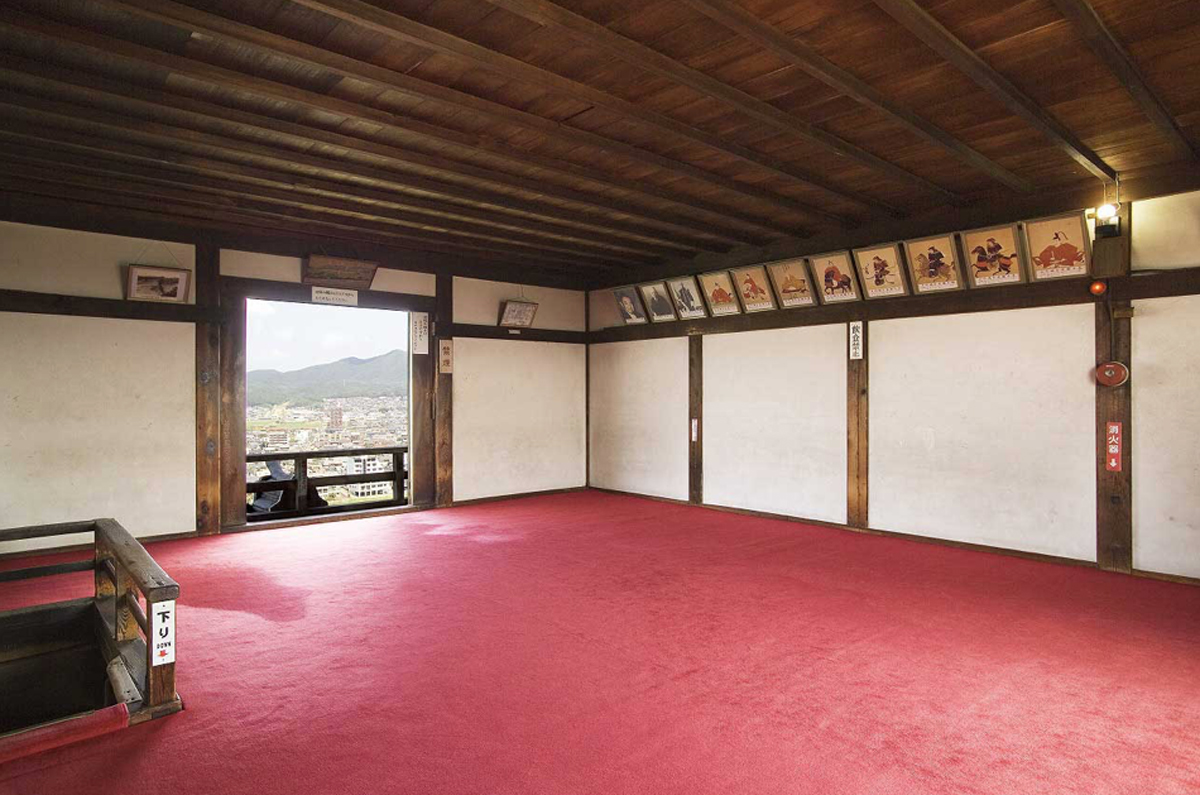
Designated a national treasure in 1952, Inuyama Castle is unusual in that it was the private property of the Naruse family until 2004.
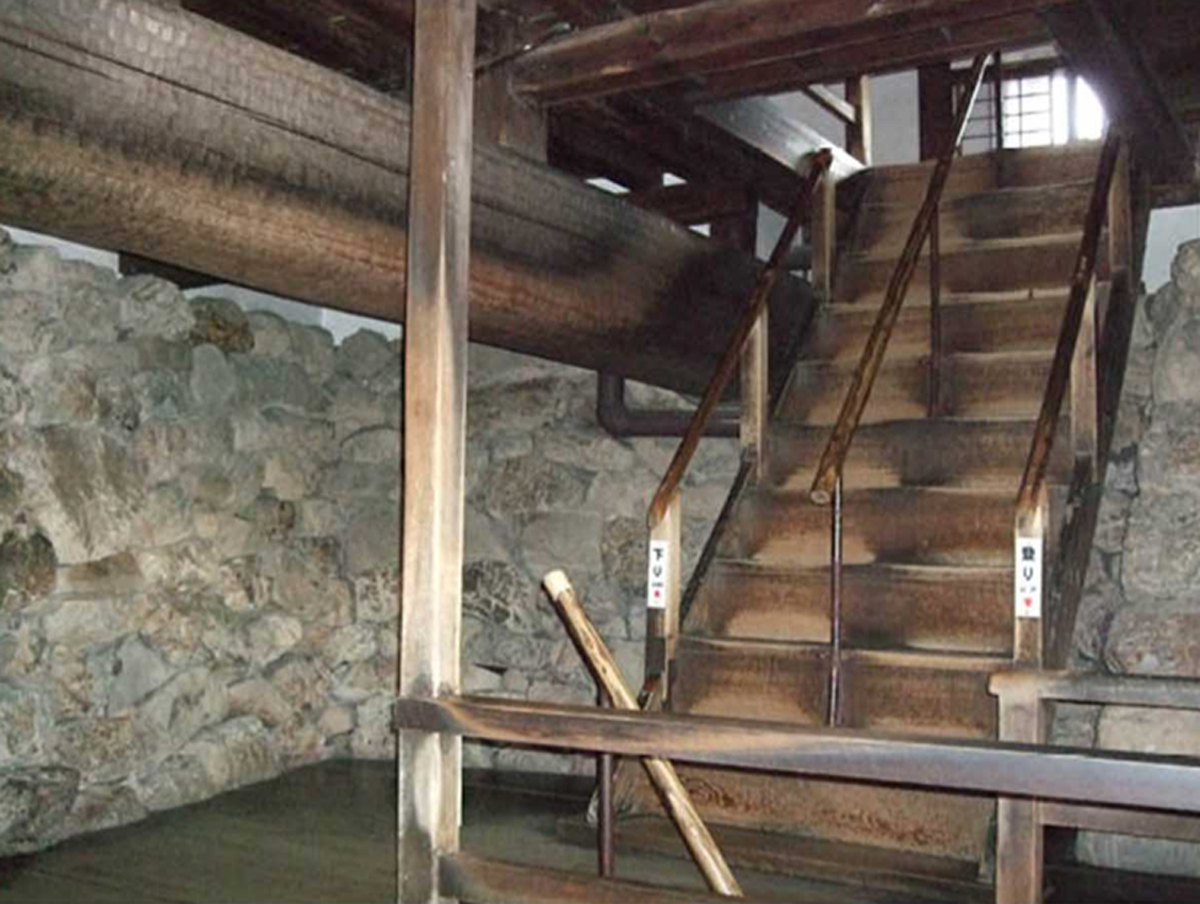
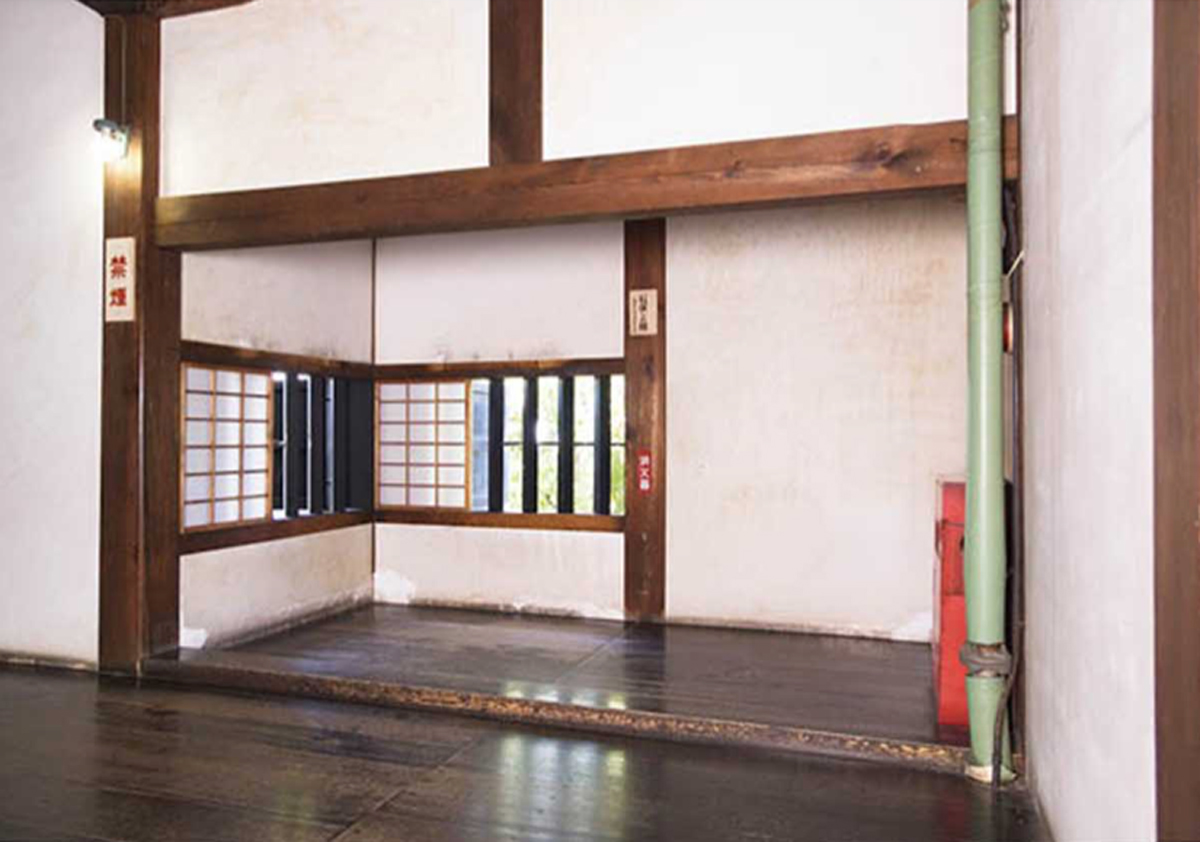
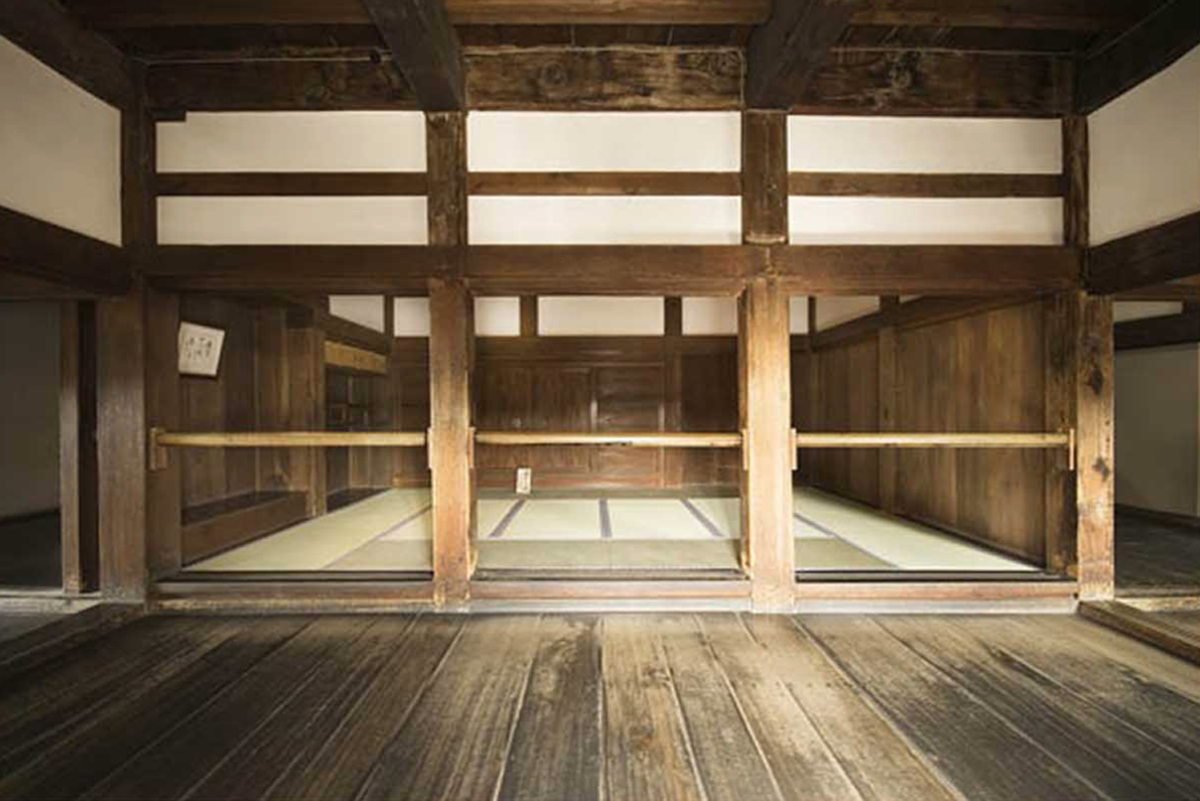
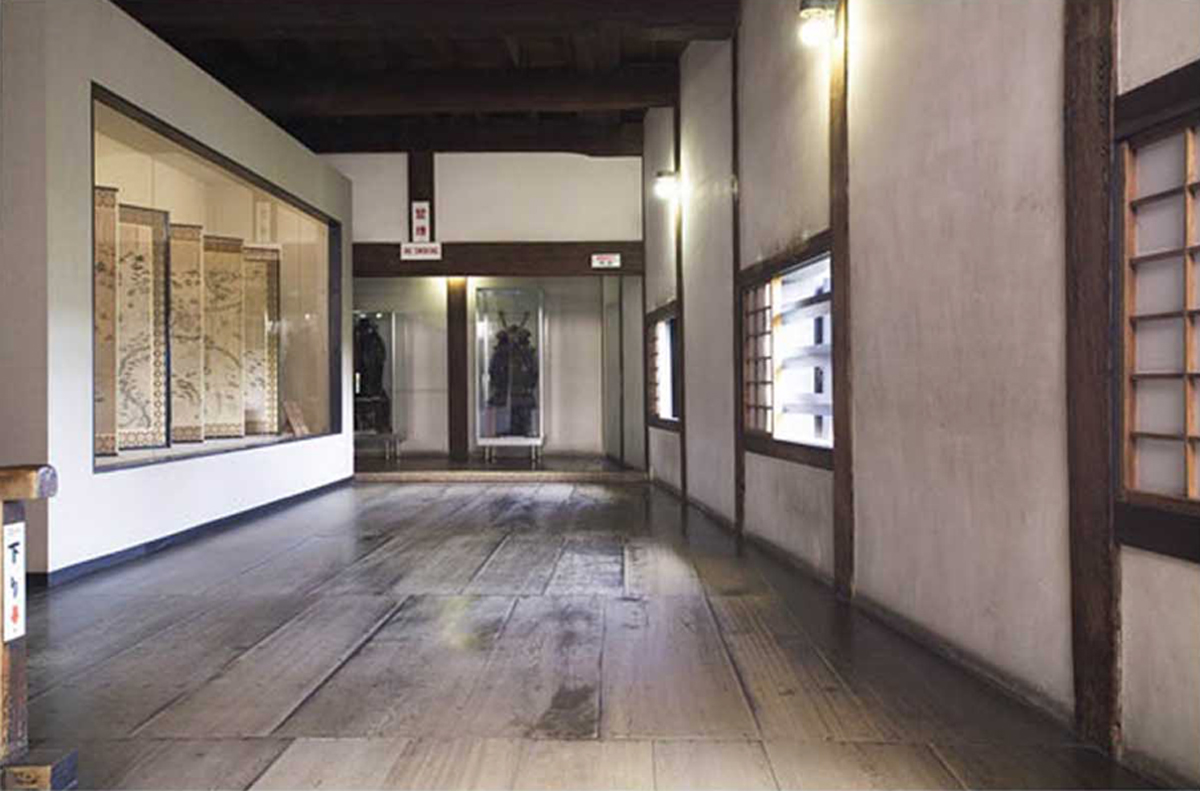
Inuyama Castle (Inuyama-jō)
Alternative name: Hakutei-jō
Built: 1537 (construction date of the tower)
Built by: Oda Nobuyasu
Castle type: Hirayama-jiro (flatland hill castle)
Remaining structures: main castle tower, stone walls, earthen embankments
Admission: Adults 550 yen; elementary and junior high school students 110 yen.
Times: 09:00 – 17:00
Closed: 29 – 31 December
Access: 15 minutes walk from Inuyama-Yūen Station on the Meitetsu Line. From Nagoya, approx 30 minutes on the Meitetsu Limited Express to Inuyama-Yūen Station
Web: http://inuyama-castle.jp (website is in Japanese, but has a video with nice aerial footage)








